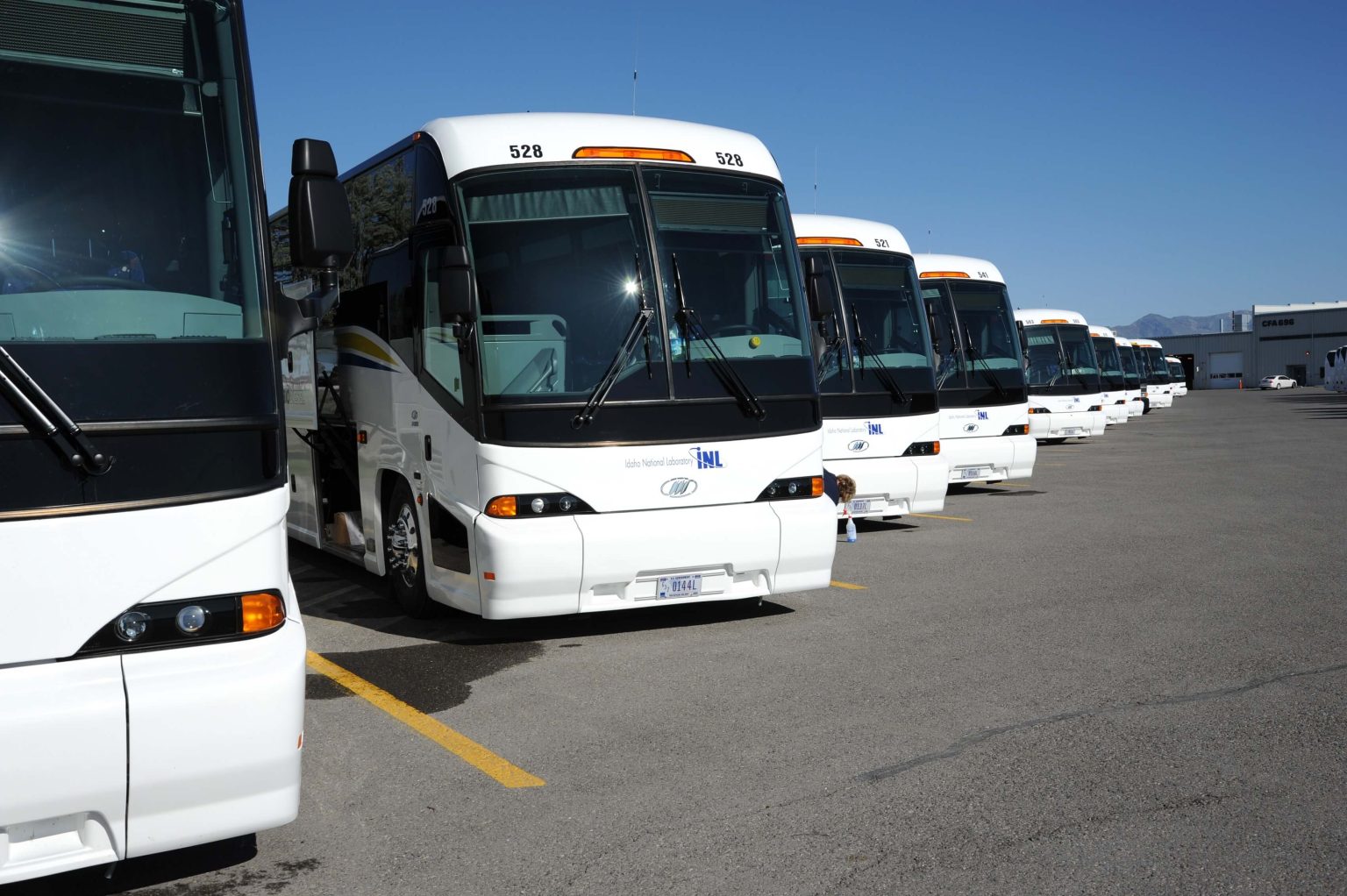A system for helping manage the giant federal vehicle fleet became even more powerful this year. The Federal Automotive Statistical Tool (FAST) is a data-reporting system that collects information on the U.S. government’s nearly 650,000 vehicles.
This year was the first that Ron Stewart, Tim Raczek and their team at Idaho National Laboratory have shifted from collecting aggregated information about the federal fleet to collecting data at the individual vehicle level.
Better information leads to better fleet management, which is particularly important with a multibillion-dollar asset such as the government’s fleet, said Stewart. He has been involved with FAST since its early beginnings in 2000 and the continual evolution ever since. With vehicles spread across the United States and around the world, the government spends roughly $5 billion each year to operate the fleet, logging almost 5 billion miles during that time.
A vital question is whether each agency’s fleet is complying with the various fleet-related requirements, Stewart said. Compliance with a host of underlying requirements is a central part of FAST, as most federal agencies don’t have tools in place to measure compliance.
High-speed computing and the internet have made data collection automatic at levels of detail that would have been inconceivable 20 years ago. If a government-owned car is being underused in the Washington, D.C., area, and another agency with a fleet is short on resources, would it be possible to coordinate cross-organizational use? That might be a stretch, but more accurate and complete data makes it something that might be considered.
“Until you have the data, you can’t make decisions like that,” Stewart said. “Complete, comprehensive data leads to better management and policy decisions.”
In the late 1990s, the General Services Administration’s Office of Government-wide Policy (OGP) was still using paper surveys to collect information about the fleet, basically the same way it had been since the 1950s. “It didn’t yield current enough information for effective decisions to be made,” Stewart said.
Meanwhile, DOE was charged with collecting performance data on alternative-fuel vehicles and alternative-transportation fuels. The Energy Policy Act of 1992 had required that a certain percentage of vehicles in the federal fleet be alternatively fueled. In April 2000, an executive order called for each agency operating 20 or more motor vehicles within the United States to reduce its entire vehicle fleet’s annual petroleum consumption by at least 20 percent by the end of FY 2005.
INL was enlisted because the DOE’s Vehicle Technologies Office (VTO) already had people there collecting vehicle-based information. Stewart said they proposed an internet-based resource.
“GSA was concerned with fleet management while DOE was concerned with energy consumption,” he said. “There was an 80 percent overlap between the data sets the two organizations needed, so a collaborative project to collect the needed data only made sense.”

In 2002, the U.S. Energy Information Administration (EIA) became a partner in FAST, bringing its own data collection authority to get more information about the location of alternatively fueled vehicles in the federal fleet. EIA was able to take advantage of the data being collected through FAST to eliminate a largely redundant survey of the federal fleet it also was conducting.
Other government agencies involved in FAST include the Office of Management and Budget, which receives Annual Fleet Budget Summary submissions from agencies, and the Environmental Protection Agency, which receives an annual summary of agency compliance with the Energy Independence and Security Act of 2007 (EISA 2007) and low-greenhouse gas (LGHG) vehicle acquisition mandates. Each of these stakeholders benefits from having access to a more comprehensive data set than they would individually have the authority to collect, and there are significant policy- and decision-making benefits to be gained by using a single, shared data set.
When FAST was first introduced, the data was keyed in by hand. By 2014, data was being dumped from each agency’s system and uploaded into FAST, allowing individual vehicle-level data. “One of the things that has surprised me is the longevity of the project,” Stewart said. “The technical evolution we’ve seen — the ability to collect data via the internet and the federal agencies maturing in their use of systems to manage and report fleet data — has led to some challenging and rewarding technical work for my team.”
INL’s responsibility all along has been to maintain and improve the system, provide user support and cope with changes in policy. The Energy Policy Act of 2005 offered new directives, and an executive order in 2007 required agencies to reduce greenhouse gas emissions 3 percent a year or 30 percent by the end of fiscal year 2015. EISA 2007 brought requirements related to federal fleet fueling centers and acquisition of LGHG vehicles, and each administration brings its own priorities to bear in the form of executive orders with requirements for the federal fleet.
With FAST, 50 government agencies answer data calls involving:
- The number, types and location of vehicles within their fleets
- Vehicle acquisitions
- Acquisition and operational costs
- Vehicle miles traveled
- Cost, types and amount of fuel consumed
- Access to alternative fuels needed by vehicles in the fleet
- Information about fueling infrastructure and electric vehicle supply equipment supporting federal fleet vehicles and/or employee workplace charging
“This data set tells the stakeholders what the federal fleet is made up of, where it is, and how it is being used,” Stewart said. “More importantly, it’s a key resource for stakeholders to base policy and management decisions upon, as well as to measure agency compliance and whether the agencies are effectively managing their fleets. It exists because the three entities — DOE, GSA, EIA — have pooled their data collection and management authority, and we’ve played an important role in enabling them to collect and manage the information over the years.”
As interesting as the data might be, the data set also represents a valuable resource for the federal government going forward. INL and the project sponsors within GSA and DOE recognize that value, particularly when used in conjunction with other information and projects being managed by organizations within DOE, such as the Vehicle Technologies Office and the Federal Energy Management Program. The information about the federal fleet and its operation, particularly at the level of detail now being collected, makes it even more valuable as INL and project sponsors look at research questions that surround driving innovation and evolution in the transportation sector, energy security, the roles of electric and even autonomous vehicles, and the infrastructure needed to support such vehicles.






